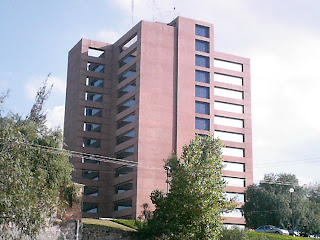"Himno Nacional Mexicano" = Mexican National Anthem (translated to Easy Spanish).
Es la canción nacional que nos distingue como mexicanos, y a pesar de haber sido escrito y compuesto en los años de 1853 y 1854 respectivamente, fue hasta 1943 cuando se convirtió en el canto oficial. Junto con la bandera y el escudo, el himno forma parte de los tres símbolos patrios.
It's our national song. It was written (lyrics) in 1853 and composed (music) in 1854, but it was officialy accepted until 1943. The 'Anthem', the 'Flag' and the 'Shield' are part of the three national symbols.
-
Nuestro himno fue escrito por el poeta potosino Francisco González Bocanegra; no obstante, el carácter 100% nacionalista de estas estrofas se vinieron abajo cuando un extranjero (español, para ser más precisos) compuso la música para colocarlas a la letra previamente escrita por el mexicano.
En mi opinión, hubiera sido preferible que un mexicano compusiera también la música, pero eso no sucedió así y todos tenemos que resignarnos a entonar la música establecida (la cual, por cierto, por ley no puede ser modificada de ninguna forma).
Our anthem was written by Francisco González Bocanegra, a poet from San Luis Potosí. Nevertheless, the full-nationalism of the lyrics went down when a foreigner (from Spain, exactly) composed the music for them.
In my opinion, it would've been better if also a Mexican would've composed that music, but it didn't happen and we all have to sing as it is (by the way: the melody cannot be changed because that would cause legal problems).

Francisco González Bocanegra
-
El Himno Nacional suele cantarse en casi todos los eventos oficiales e importantes. También cuando va a darse inicio a celebraciones deportivas (como en los partidos de football)... y por supuesto, los niños de todas las escuelas (desde Maternal y Preescolar, hasta Secundaria) lo cantan cada lunes para dar inicio a las labores de la semana.
The National Anthem is sung in all the official and important events, like Sports (eg. football matches)... and of course, school-children (from Maternelle and Kindergarten, til Secondary/Middle-school) sing the anthem every Monday to start the work for the whole week.
-
Por lo general, el formato rápido se da de la siguiente manera: coro-1a. estrofa-coro. En eventos escolares, se aumenta una estrofa, por lo que el formato se alarga: coro -1a. estrofa- coro -2a. estrofa- coro.
Y en celebraciones más formales, se aumentan todavía dos estrofas más (que casi nadie se las sabe).
ES IMPORTANTE RECORDAR QUE, SIN IMPORTAR LA CANTIDAD DE ESTROFAS INTEGRADAS, SIEMPRE SE TERMINA CON EL CORO, INTERCALÁNDOLO A ÉSTE ENTRE CADA ESTROFA.
Usually, the quick format goes like this: chorus-1st. verse-chorus. In schools, you get another verse, so the format is a bit larger: chorus-1st. verse-chorus-2nd. verse-chorus.
In formal celebrations, two more verses (which almost nobody knows) are added.
YOU MUST REMEMBER THAT, NO MATTER THE NUMBER OF VERSES, YOU ALWAYS END UP WITH THE CHORUS, BY INTERCALATING THE LATTER BETWEEN EACH VERSE.
-
Ahora les pondré la versión usada en las escuelas, pues es la más conocida y común. Al lado, colocaré una especie de traducción, pues por sí solo está difícil entenderle:
This is the "school version", the most known-common. You'll have a kind of translation, because it's difficult to understand (even for a Mexican):
-
Coro
Mexicanos, al grito de "Guerra!" [Mexicanos, al escuchar el grito de "Guerra!"]
El acero aprestad, y el bridón; [Preparen el acero y los caballos]
Y retiemble en sus centros, la tierra,
Al sonoro rugir del cañón. [Y que los cañones hagan retumbar los centros de la tierra]
-
Estrofa I
Ciña, ¡oh, Patria!, tus sienes de oliva,
De la paz el arcángel divino, [Oh, Patria! Que el arcángel divino De la Paz, coloque la oliva en tus sienes]
Que en el cielo, tu eterno destino
Por el dedo de Dios se escribió. [Pues tu eterno destino fue escrito en el cielo por el dedo de Dios]
-
Mas si osare un extraño enemigo [Y si un extraño enemigo se atreviera]
Profanar con su planta tu suelo [A profanar tu suelo con su pie]
Piensa, ¡oh, Patria querida!, que el cielo [Recuerda, querida Patria]
Un soldado en cada hijo te dio (Un soldado en cada hijo te dio) [Que el cielo te dio un soldado en cada hijo]
-
{Coro}
-
Estrofa II
¡Patria!, ¡Patria! Tus hijos te juran [Si el clarín, con su acento bélico,]
Exhalar en tus aras su aliento, [Convoca a tus hijos a luchar con valor]
Si el clarín con su bélico acento [Patria, ellos te juran]
Los convoca a lidiar con valor. [Respirar por última vez en tus altares - O bien: morir sin cuestionar]
-
¡Para ti las guirnaldas de oliva! [Esto se le dice a la Patria: A ti te daremos las guirnaldas de oliva!]
¡Un recuerdo para ellos de gloria! [Recordaremos con gloria a todos los mexicanos que lucharon!]
¡Un laurel para ti de victoria! [Otra vez a la Patria: Te otorgaremos un laurel de victoria]
¡Un sepulcro para ellos de honor! (¡Un sepulcro para ellos de honor!) [Y a los mexicanos muertos en batalla, les daremos un sepulcro de honor]
-
{Coro}

 -
- -
-







 -
-

 -
-





 And yeah, in a cascarita de fucho some rules dissapear, so now just imagine in basket! Obviously, most of us has played this 'gringo' sport, but generally we don't play it well, as we should.
And yeah, in a cascarita de fucho some rules dissapear, so now just imagine in basket! Obviously, most of us has played this 'gringo' sport, but generally we don't play it well, as we should.






 But before having the Oath
But before having the Oath